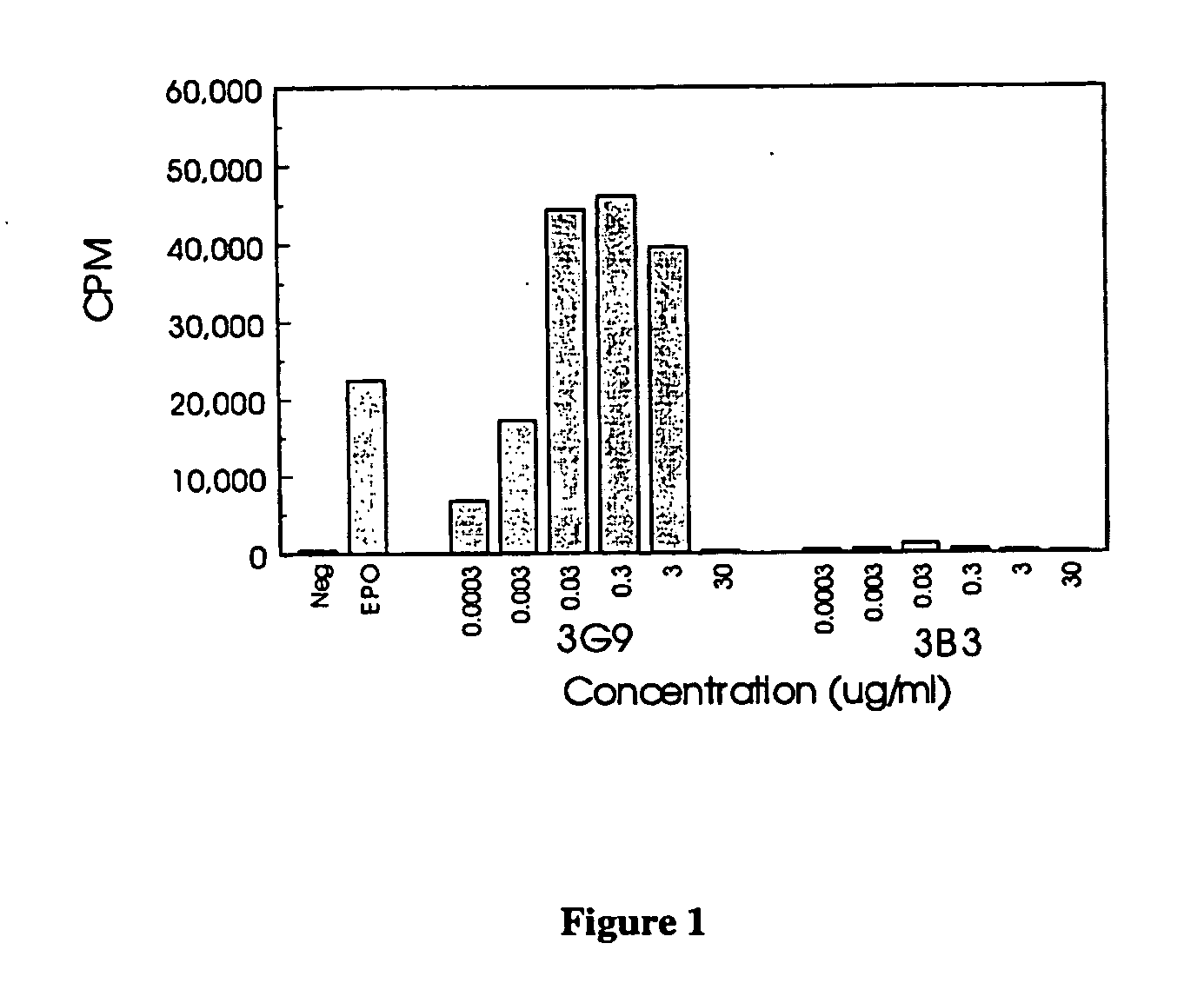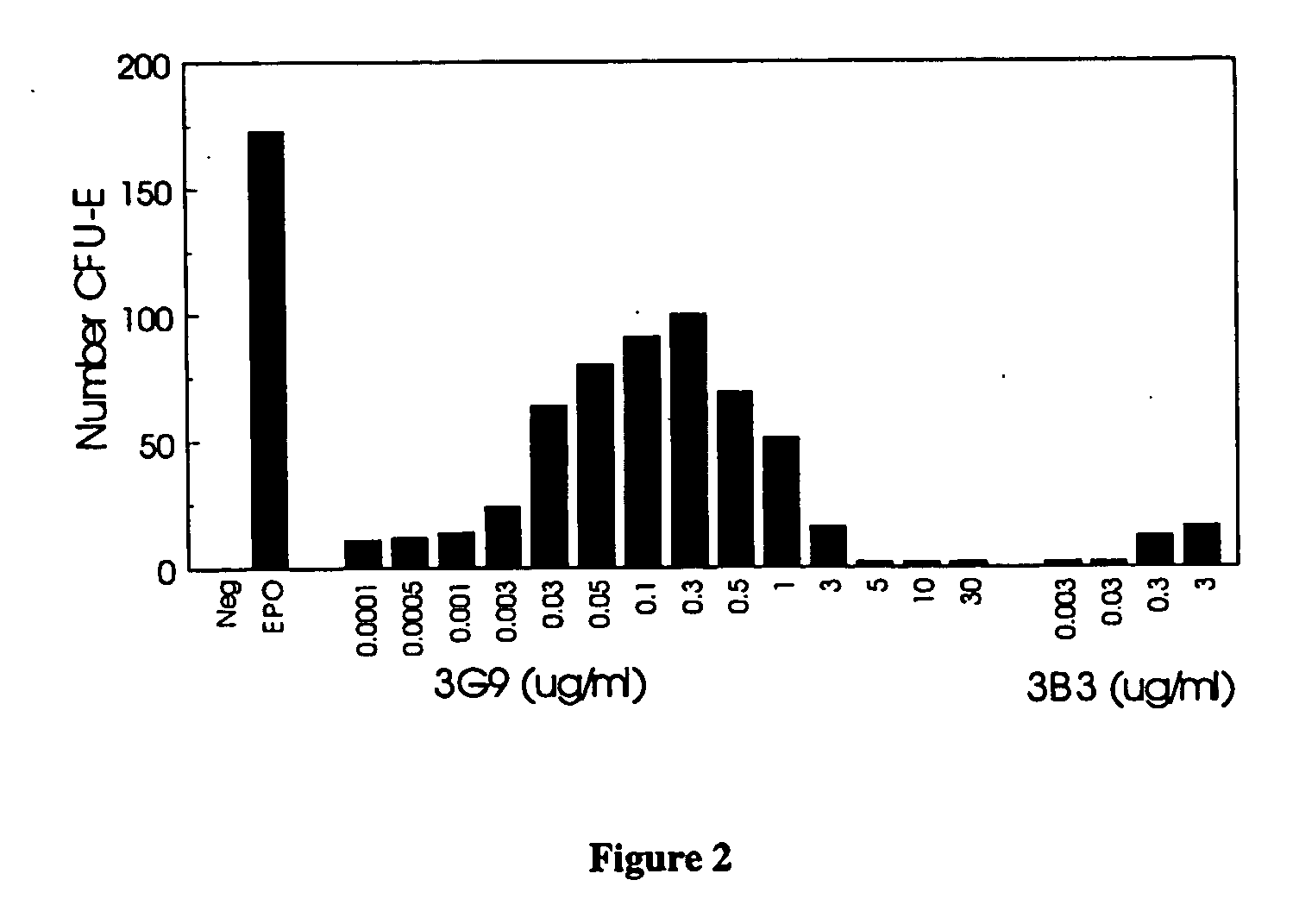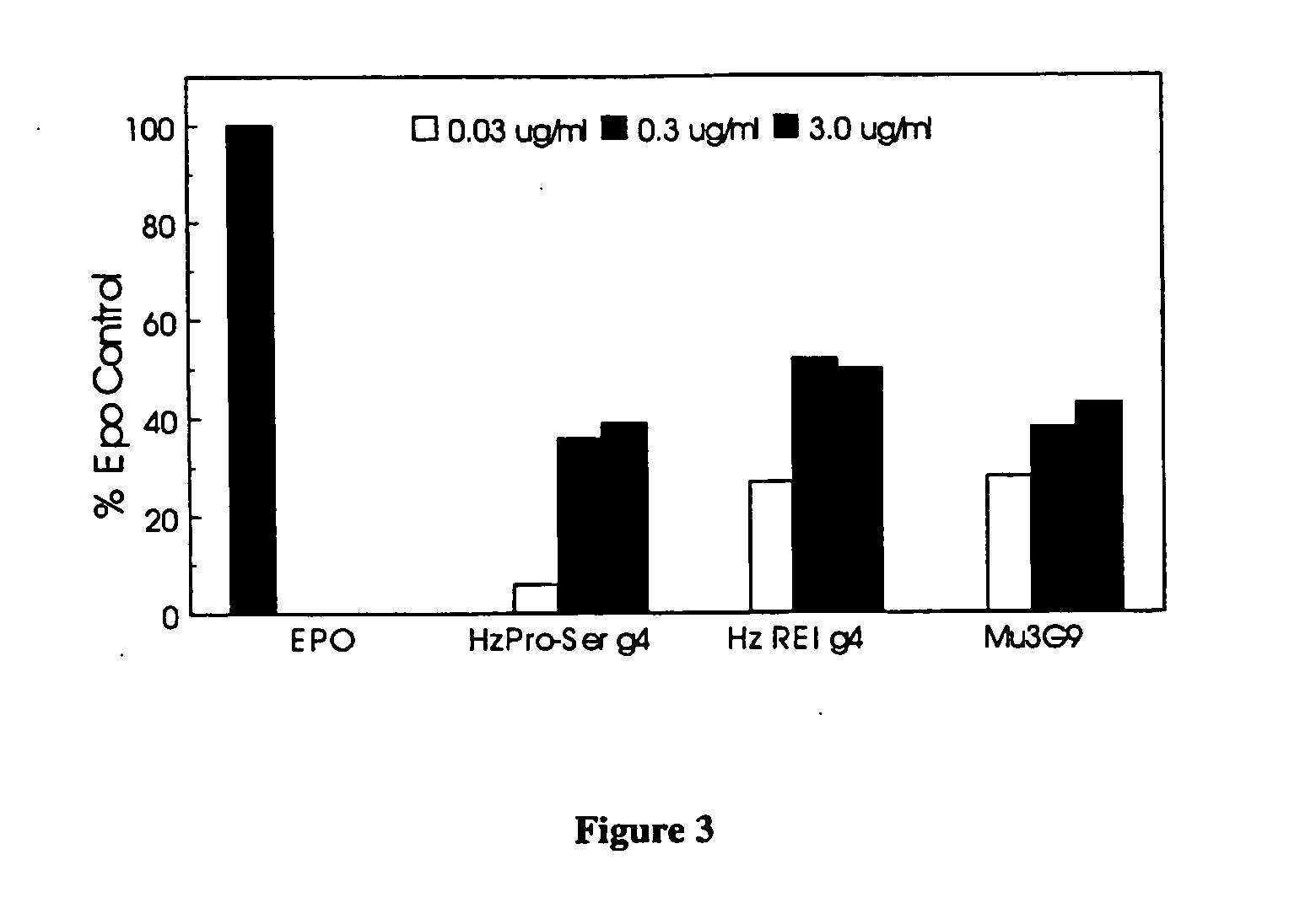Erythropoietin receptor antibodies
- Summary
- Abstract
- Description
- Claims
- Application Information
AI Technical Summary
Benefits of technology
Problems solved by technology
Method used
Image
Examples
example 1
Preparation and Screening of EpoR Agonist Monoclonal Antibodies
Monoclonal Antibody Generation
[0124] Mice (F1 hybrids of Balb / c and C57BL / 6) were immunised subcutaneously with 10 ug recombinant EpoR in Freunds complete adjuvant and 4 weeks later with 10 ug EpoR in Freunds incomplete adjuvant. On the basis of a good serum antibody titer to EpoR, one mouse received further immunization of 25 ug EpoR (i.p. in saline) at 8 weeks and another similar immunization two days later. A splenectomy was performed two days following the final immunization. Mouse spleen cells were used to prepare hybridomas by standard procedures, (Zola, H. Ed., Monoclonal Antibodies, CRC Press Inc. (1987)). Positive hybridomas were cloned by the limiting dilution method.
Hybridoma Screening Assay
[0125] 96-well plates were coated with EpoR-Fc (0.5 ug / ml, 100 ul / well in PBS) by incubation overnight at 4° C. The solution was then aspirated and non-specific binding sites were blocked with 250 ul / well of 1% bovine...
example 2
Biophysical Characterization of EpoR Agonist Monoclonal Antibodies
Competition for Binding to EpoR with Epo
[0130] Antibodies were assessed for their ability to compete with Epo for binding to EpoRFc by surface plasmon resonance using a BIAcore instrument. Refractive index units (RU) increased for the sequential addition of EpoRFc, Epo and monoclonal antibody (or buffer), or the sequential addition of EpoRFc, mAb (or buffer) and Epo. The RU are a direct measure of the amount of each protein which can bind. Hence, prebinding of Epo reduces the amount of 3G9 which can bind. Similarly, prebound 3G9 is displaced by Epo which results in a negative change in RU.
[0131] Goat anti-human IgG, Fc specific antibody was immobilised on a sensor chip surface and 25 ul Epo-Rec-Fc (2 ug / ml diluted in HBS buffer) at 5 ul / min. was injected, the RU recorded, followed by injections of 25 ul Epo (5 ug / ml diluted in HBS buffer), record RU and 25 ul 3G9 Mab (10 ug / ml in HBS buffer), record RU. The surfac...
example 3
Biological Activity of EpoR Monoclonal Antibodies Self-Limiting Effect
UT7-Epo Proliferation
[0134] UT-7Epo is a human cell line which depends on Epo for growth. Thymidine incorporation was used to measure proliferation of UT7-Epo cells. 5×104 cells in log phase growth were plated in 100 ul IMDM / 10% FCS per well of a 96-well microtiter plate with test samples and Epo control curve. After a 3 day incubation at 37° C., 3H-thymidine (1 uCi / well; NEN) was added for 4 hrs and the plate harvested with TCA and cold ethanol. Solid scintillant (Meltilex; Wallac) was melted onto the filter containing the samples and radiaoactivity measured on a Betaplate reader (Wallac). Data were reported in FIG. 1 as the mean of quadruplicate samples.
[0135] The 3G9 mAb stimulated greater proliferative activity than the Epo control. Maximum proliferative activity was at 0.3 ug / ml and there was a bell-shaped dose response curve as concentration increased. The negative control antibody 3B3 had no activity in...
PUM
| Property | Measurement | Unit |
|---|---|---|
| Dimensionless property | aaaaa | aaaaa |
| Weight | aaaaa | aaaaa |
Abstract
Description
Claims
Application Information
 Login to View More
Login to View More - R&D
- Intellectual Property
- Life Sciences
- Materials
- Tech Scout
- Unparalleled Data Quality
- Higher Quality Content
- 60% Fewer Hallucinations
Browse by: Latest US Patents, China's latest patents, Technical Efficacy Thesaurus, Application Domain, Technology Topic, Popular Technical Reports.
© 2025 PatSnap. All rights reserved.Legal|Privacy policy|Modern Slavery Act Transparency Statement|Sitemap|About US| Contact US: help@patsnap.com



